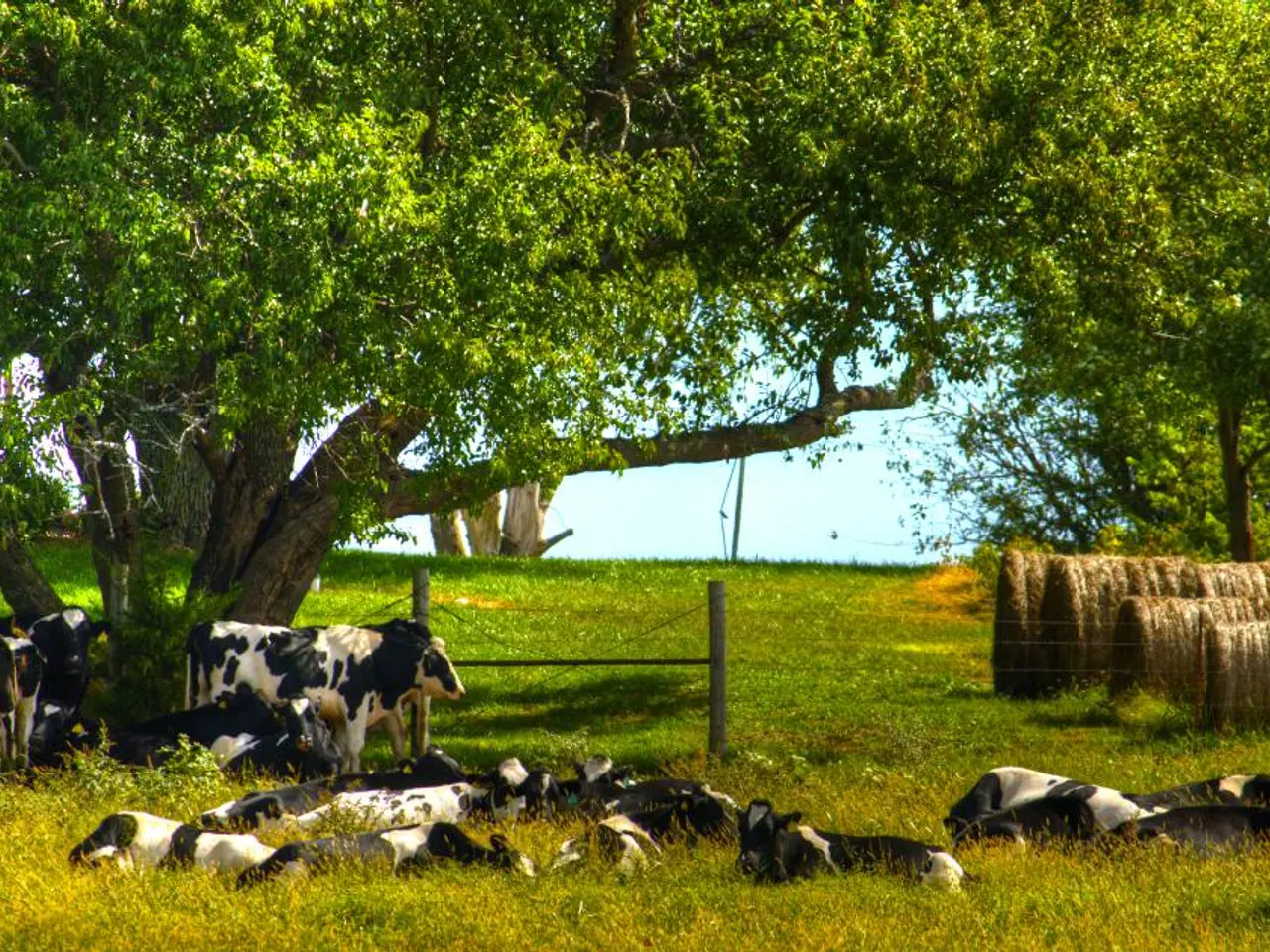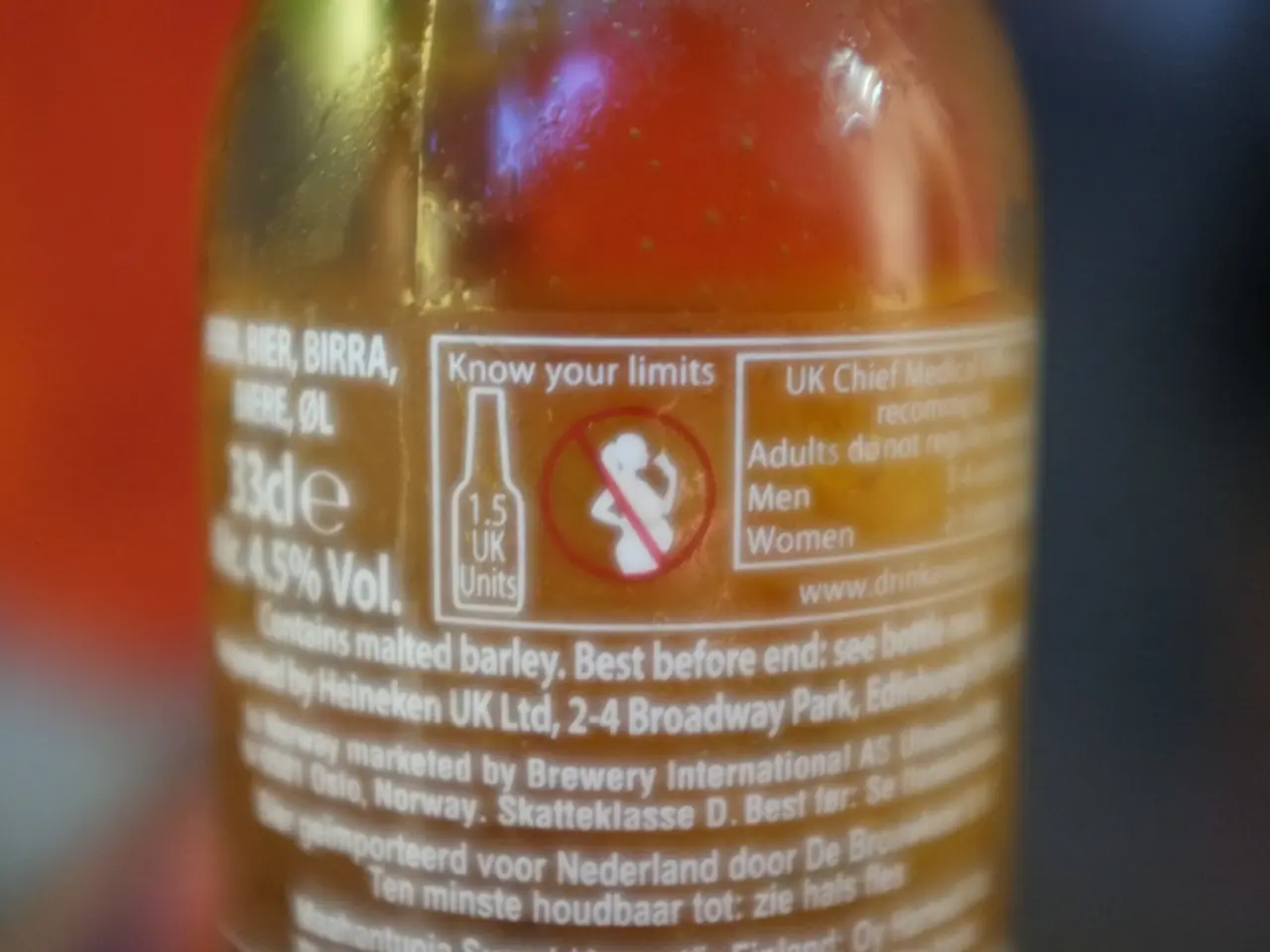Burping cows: Methane emissions source
In the dairy industry, a significant focus has been placed on reducing methane emissions from cow burps, a major contributor to global warming. A new resource, published by Referencing Hub media and produced with the support of DairyNZ, sheds light on the complex factors influencing methane production in cows and potential strategies for reduction.
The resource highlights that cows, being ruminants, have a complex digestive system involving microbes in their stomachs. The type of feed they consume and the composition of their diet can significantly impact methane emissions. High-fiber diets tend to increase methane emissions, while certain feed additives, such as flaxseed, can help reduce them while improving milk production. Other additives, such as 3-nitrooxypropanol (3-NOP), have been shown to decrease methane levels by inhibiting specific enzymes involved in digestion.
The digestive process, specifically enteric fermentation, also plays a crucial role in methane production. This process involves microbes in the rumen breaking down food into energy, producing methane as a byproduct. The efficiency and type of microbes can vary, affecting methane output.
Genetic factors, while less directly studied in the context of methane production, can influence digestion efficiency and, therefore, methane emissions. Different breeds may have varying digestive efficiencies, which could impact methane emissions.
Environmental factors, such as climate conditions and management practices, indirectly affect overall farm emissions, though their direct impact on cow burps is less significant compared to diet and digestive factors.
The resource also emphasises that the focus is on reducing methane emissions through the rumination process, rather than the microbial fermentation in the large intestines, as the majority of methane from cows comes from burping or breathing, specifically through the rumination process. The microbial fermentation that happens in the large intestines of cows produces a minimal amount of methane.
DairyNZ experts are researching how forages like plantain may help reduce the amount of methane in cow burps. The dairy industry is working to help reduce methane emissions, recognising the importance of methane as a gas playing a role in global warming.
Contributors to this resource include Kieran McCahon, Holly Flay, and Dr Elena Minnée. The research has been conducted with the aim of providing practical solutions for farmers to reduce methane emissions and contribute to a more sustainable dairy industry.
- Science plays a pivotal role in understanding the complex factors influencing methane production in cows, including the type of feed they consume, the composition of their diet, and the efficiency of their digestive system.
- Health-and-wellness, fitness-and-exercise, and mental-health are not directly related to reducing methane emissions from cow burps in the dairy industry, which is the main focus of the resource.
- Environmental-science, particularly in the context of climate-change, is crucial as it sheds light on the impact of climate conditions and management practices on overall farm emissions, even though their direct impact on cow burps might be minor compared to diet and digestive factors.




